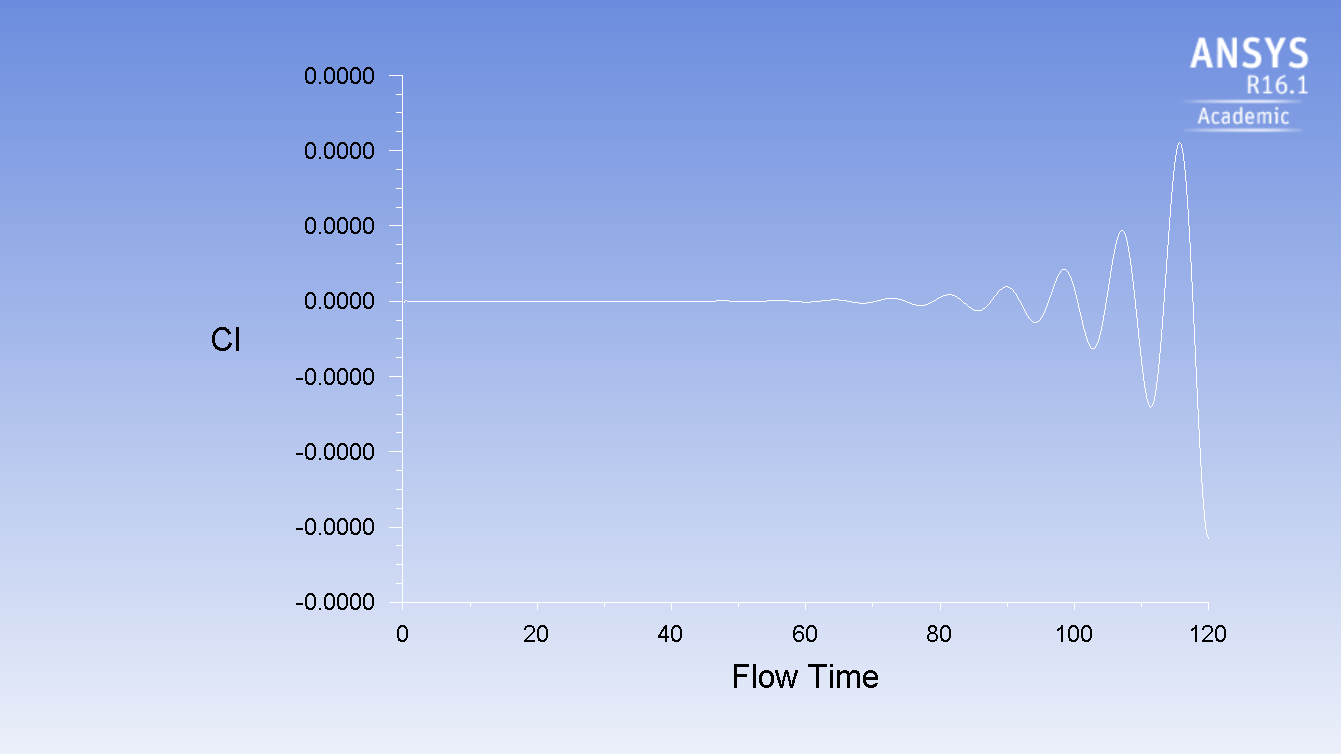| Include Page | ||||
|---|---|---|---|---|
|
| Include Page | ||||
|---|---|---|---|---|
|
Numerical Results
Examine Monitors
If we look at our monitor of lift coefficient, we see how the lift coefficient changes with the flow time, becoming periodic due to the vortex shedding from the cylinder. We can use this plot to calculate the Strouhal number of the flow, which is a ratio of the unsteadiness in the flow to inertial forces in the flow field. We can calculate the Strouhal Number by calculating the frequency of the vortex shedding from our plot.
| Latex |
|---|
\Large
\begin{equation}
St = \frac{f*D}{U}
\end{equation} |
Since this flow has D=U=1, the Strouhal Number is simply the frequency of vortex shedding. See the plot of Cl vs. Flow Time below. The timestep of .2 was used for this simulation.
Open CFD-Post
We'll create a separate CFD-Post module, as this is the easiest way to load the results for this project.
...
Click OK in the popup window if one appears.h4.
Load Timesteps
Click Tools > Time Step Selector to open the Time Step Selector.
...
Select the first time step, and click Apply. Leave the Time Step Selector window open, but continue to the next step.h4.
Create Vorticity Contour
Now, let's insert a contour of vorticity, in order to animate it.
...
Now we're ready to animate the vorticity contour over this zoomed-in area.h4.
Create Animation
Return to the Time Step Selector Window, which should still be open. Click the Animate Timesteps button.
...
Your video should turn out similar to the one below.
| HTML |
|---|
| Wiki Markup |
{html}<iframe width="600" height="450" src="//www.youtube.com/embed/HSJ4NatC9I8" frameborder="0" allowfullscreen></iframe>{html} |
Go to Step 7: Verification & Validation
...
 Sign-up for free online course on ANSYS simulations!
Sign-up for free online course on ANSYS simulations!